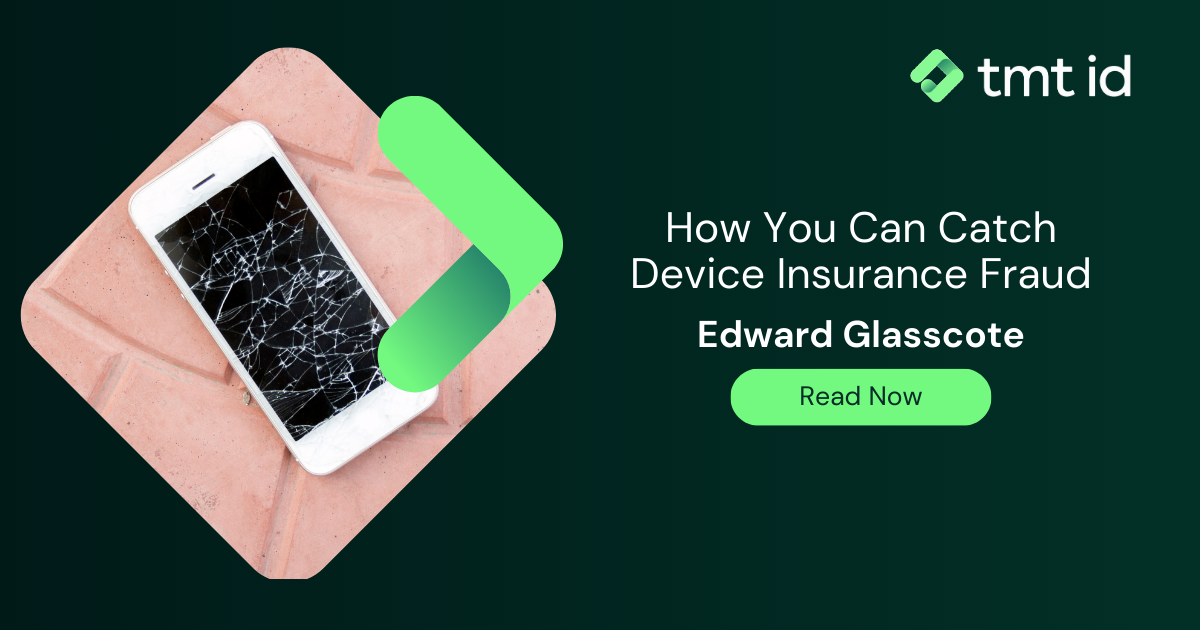
Device insurers play a difficult game: the prominence and influence of devices in modern life, especially mobile phones, means that protecting these devices is a valuable proposition – but one that can be challenging to enforce.False device insurance claims are as straightforward to make for a user as they are hard to spot for the insurer.This is down to the difficult questions that device insurers must consider.
How can an insurer be certain that a device is damaged, or lost? They can’t just take the claimant’s word for it, so what are the resource and operational costs of a thorough enough investigation into every claim? And can these costs be justified when compared to the fraud losses? By complicating the claim process do they end up losing customers?
On the claimant’s end, all they must do is sign, and provide any falsified evidence the claim might need. The statistics paint a clear and concerning image of these challenges. Insurance industry experts estimate that as many as 40% of device insurance claims are fraudulent. And of those falsified claims, only one in ten are able to be successfully detected by insurers.
Although the average insurance pay-out may not be more than £100-£200, the sheer quantity of undetected false claims causes the gross cost of fraud to rapidly inflate. According to the Insurance Fraud Bureau, the total annual cost of false insurance claims adds up to £1.6bn – with such a substantial cost, preventing fraudulent claims should be among insurers’ very top priorities.
To prevent device insurance fraud, insurers need access to as much potential evidence as possible. There are a number of potential methods for acquiring useful data, the real challenge for insurers comes in deciding which suits them best.
Conventional methods include cataloguing the IMEI and requesting photographs of the condition of the device at the start of the policy. These forms of evidence are useful but can be circumvented with enough forethought and falsified evidence.
Therefore, an effective solution to device insurance fraud is layering multiple, varied sources of information. In terms of fighting fraud, the more data the better. But this can come at the cost of customer intake – the user will expect to be asked questions, but the more laborious and overwhelming the process becomes, the more likely they look elsewhere.
To limit fraud at the claim stage, insurers can drive home the severity of false claims to the user. Device insurance fraud and forms of fraud similar to it, such as promotion abuse fraud and so-called ‘friendly-fraud’ are commonplace largely because of psychology. Consumers are less likely to see making a false claim as a criminal activity, to them, they are simply exploiting a loophole. Educating consumers about fraudulent claims and their repercussions can be an effective deterrent, but only for those who care about the consequences and are engaged enough to be educated.
Another method of detecting false claims requires training fraud prevention staff to identify suspicious customer behaviours. These ‘red-flags’ can include actions such as calls to clarify contract specifics in the days or weeks before a claim. While this can help as part of a layered approach, alone this can be circumstantial and coincidental.
With this in mind, a solution that is going underutilised by many device insurers is Mobile Network Operator (MNO) Data.
Perhaps the most effective way to learn about an insured phone is through the data it naturally passes to and from the network.
MNO data can do a number of things to spot signs of insurance fraud, including:
MNO data is very difficult to falsify – especially for a normal, if opportunistic, customer – making it a great basis of an incredibly robust insurance fraud prevention strategy. If device insurers are going to bring their rate of fraud down from 40%, MNO data needs to be part of the equation.
If you would like to use MNO data to detect fraud in your business, please get in touch. You can also read more about the future of device insurance in our related article.
Last updated on January 31, 2025
We provide the most comprehensive device, network and mobile numbering data available
Contact us > Chat to an expert >